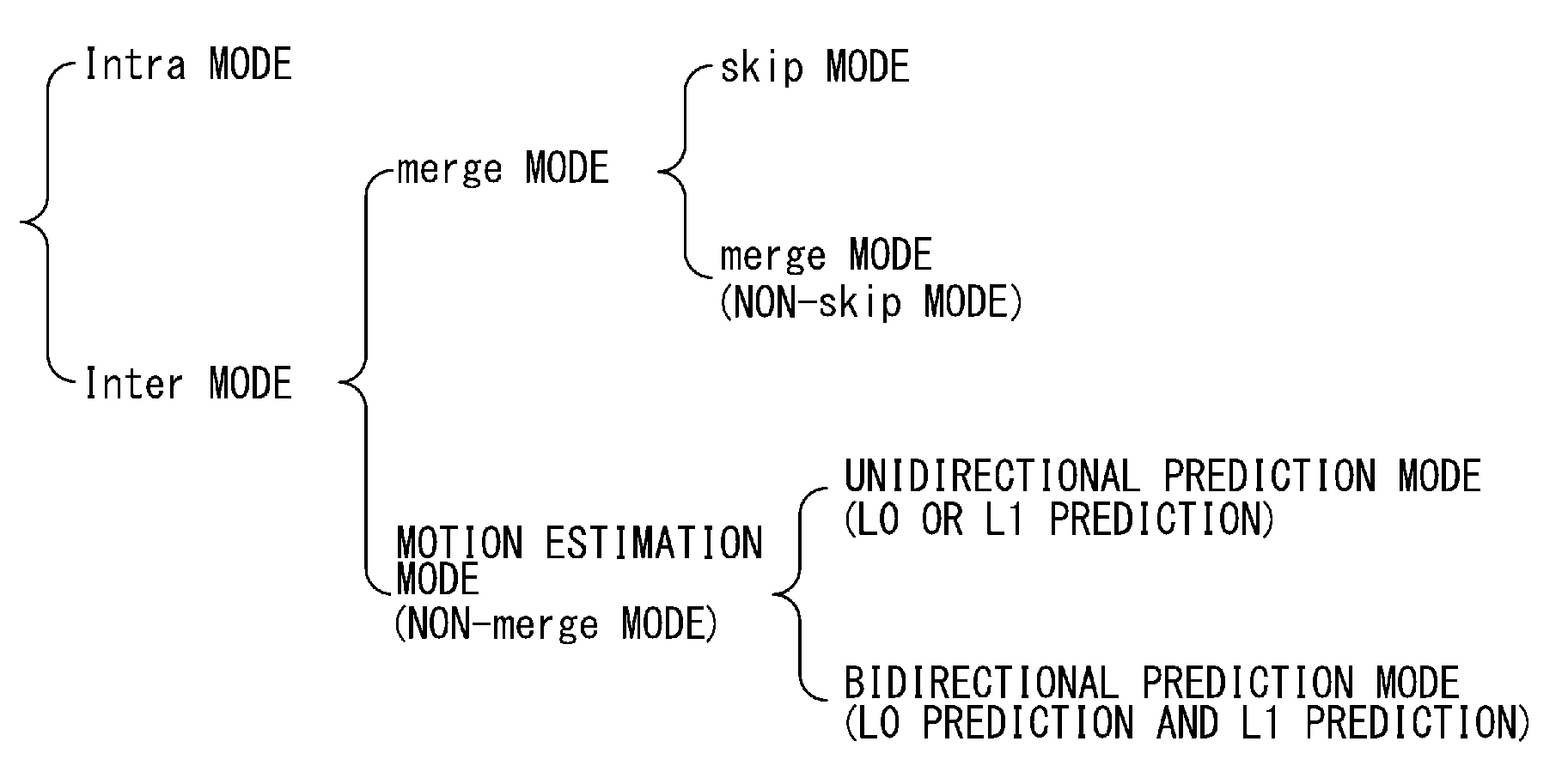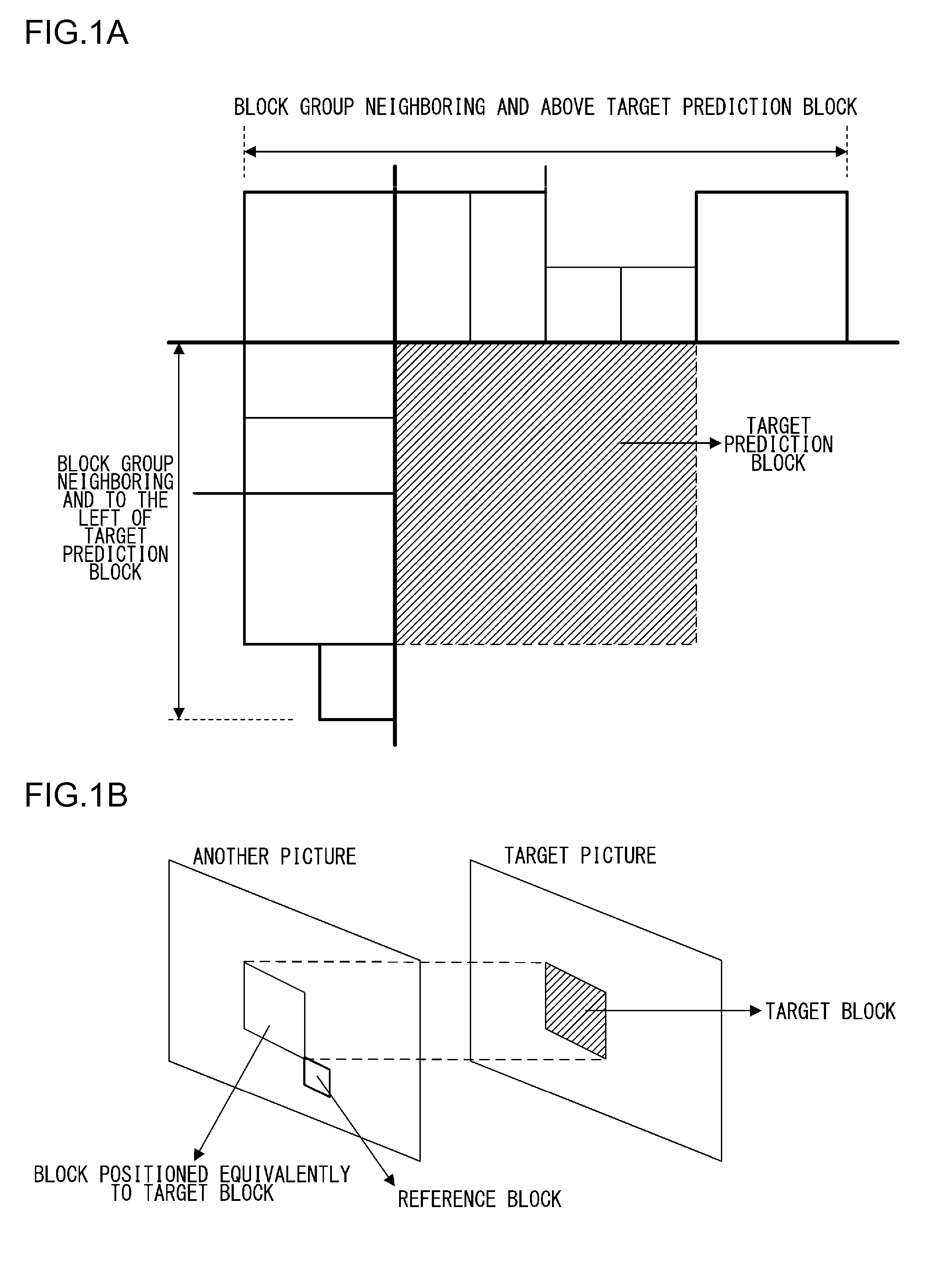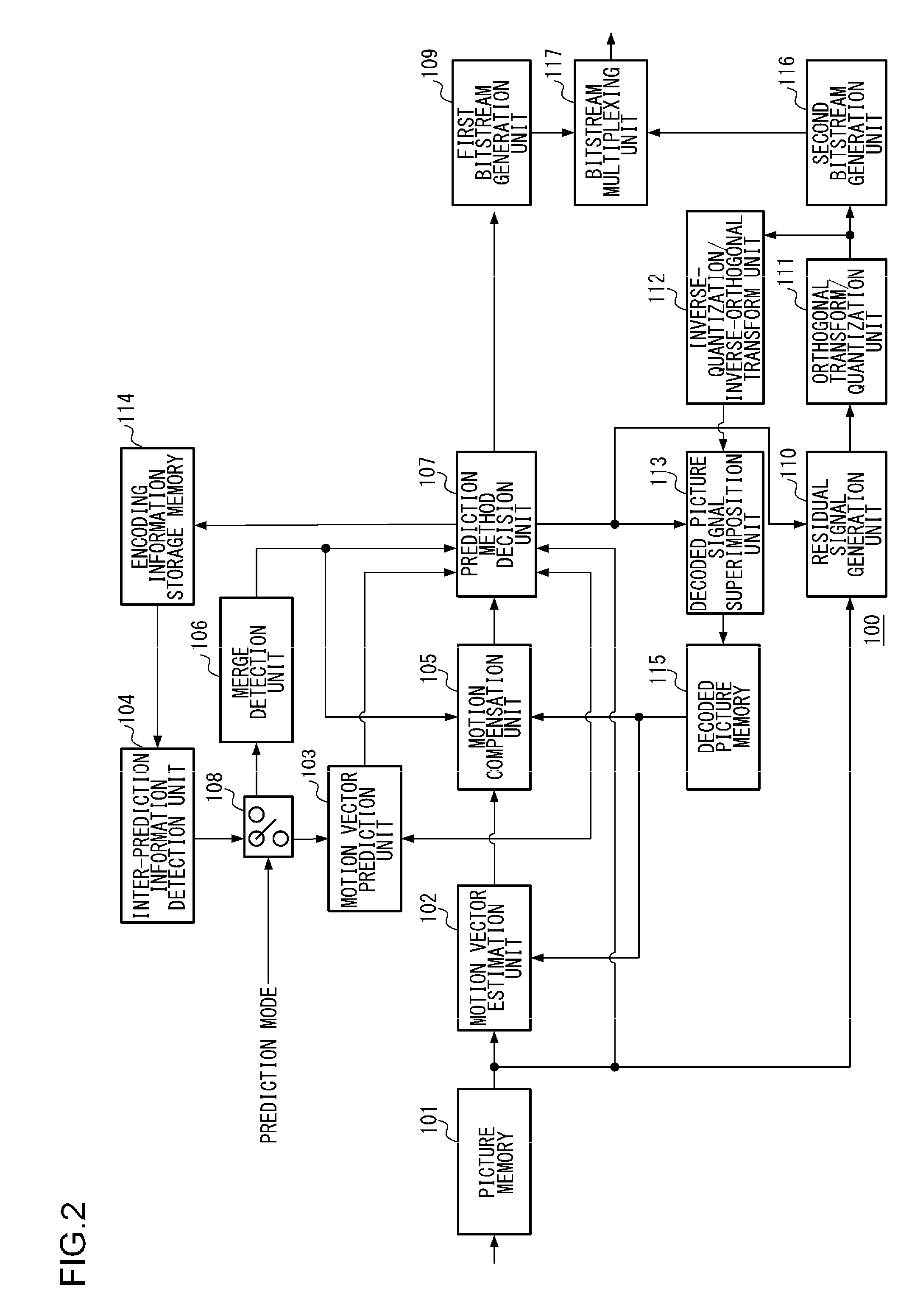Picture coding device, picture coding method, picture coding program, picture decoding device, picture decoding method, and picture decoding program
a technology of coding devices and motion information, applied in the field of coding moving pictures, can solve the problems of increasing the number of accesses to the memory storing coding information already coded, less efficient coding, and increasing the number of code accesses, so as to reduce the load required to process motion information and improve the efficiency of coding motion information
- Summary
- Abstract
- Description
- Claims
- Application Information
AI Technical Summary
Benefits of technology
Problems solved by technology
Method used
Image
Examples
first embodiment
[0160]A description will first be given of the merge detection unit 106 according to the first embodiment shown in FIG. 2 illustrating the configuration of the moving picture coding device 100. FIG. 11 shows the detailed configuration of the merge detection unit 106. The part bounded by the heavy dotted line in FIG. 11 represents the merge detection unit 106 and a description will be given with reference to this drawing. The merge detection unit 106 includes a coding information derivation unit 310, a reference candidate list construction unit 311, an identical information detection unit 312, an output unit 313, and a reference candidate list storage memory 314.
[0161]Initially, the destination of the output of the inter-prediction information detection unit 104 is switched to the merge detection unit 106 according to the prediction mode input to the switch 108 and controlled by the moving picture coding device 100. The coding information of the reference neighboring blocks referred ...
second embodiment
[0244]FIGS. 31A and 31B show arrangements of reference neighboring blocks referred to by the target prediction block according to the second embodiment. Neighboring blocks are denoted by similar symbols as in FIGS. 9A and 9B. The exemplary arrangement of FIG. 31A is used in the following description. According to the second embodiment, the neighboring blocks located in the same picture as the target prediction block are organized into a block group neighboring the target prediction block to the left (A0 and A1 in FIG. 31A) and a block group neighboring above (B0, B1, and C0 in FIG. 31A). One reference neighboring block is selected to represent each block group.
[0245]As in the first embodiment, a decision is made as to whether the neighboring block is available by referring to the prediction mode of the coding information of the neighboring block and the position of the neighboring block. The second embodiment differs in that one representative neighboring block is selected from each...
third embodiment
[0301]In the third embodiment, the method of selecting the reference neighboring block is changed according to the prediction mode. A description will be made with reference to the arrangement of neighboring blocks in FIG. 31A. In the merge mode, the coding information of one of six neighboring blocks A0, A1, B0, B1, C0, T is selected as the reference target. In the motion estimation mode, of the six neighboring blocks A0, A1, B0, B1, C0, and T, A0 and A1 are placed in a block group neighboring the target prediction block to the left, and B0, B1, and C are placed in a block group neighboring above. One reference neighboring block is selected to represent each block group. Of the three neighboring blocks including the blocks respectively representing the block group to the left and the block group above and the block T, the coding information of one neighboring block is selected as the reference target. In other words, the method according to the first embodiment is used in the merge...
PUM
 Login to View More
Login to View More Abstract
Description
Claims
Application Information
 Login to View More
Login to View More - R&D
- Intellectual Property
- Life Sciences
- Materials
- Tech Scout
- Unparalleled Data Quality
- Higher Quality Content
- 60% Fewer Hallucinations
Browse by: Latest US Patents, China's latest patents, Technical Efficacy Thesaurus, Application Domain, Technology Topic, Popular Technical Reports.
© 2025 PatSnap. All rights reserved.Legal|Privacy policy|Modern Slavery Act Transparency Statement|Sitemap|About US| Contact US: help@patsnap.com



